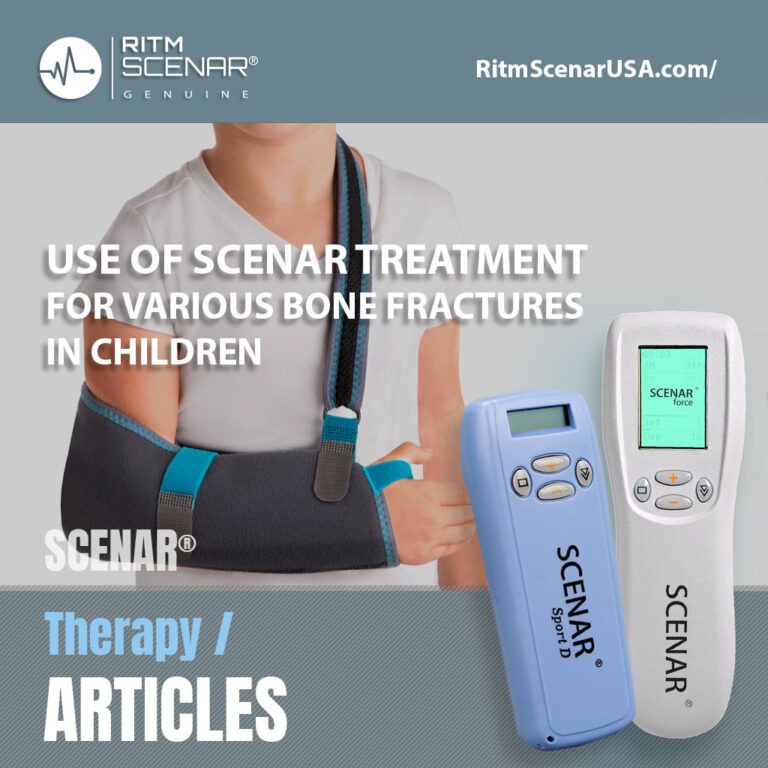Based on the article by Perfiliev U.I., Pudeyan M.A., and Starovoitov U.U.
Rostov State Medical University, Russia.
One of the principal causes negatively affecting the health of children is locomotory trauma, especially to the upper and lower extremities.
Musculoskeletal injuries account for approximately 10-15% of all childhood injuries, with most occurring as a result of a fall, sports-related injury, motor vehicle trauma, or intentional physical abuse.
Due to the flexible nature of the upper extremities, they are prone to fractures more than other parts of the child’s body. The bones in the hand and wrist are also smaller and, in many cases, weaker. This makes them more susceptible to fractures.
Pediatric lower extremity injuries occur much less frequently than upper extremity injuries. Long-bone fractures occur after high-energy trauma in younger children.
In reviewing the most common orthopedic extremity injuries, it is important that the physician have a strong understanding of the significant differences between the adult and pediatric musculoskeletal system. The pediatric musculoskeletal system is constantly maturing and is composed of more cartilage and collagen than in adults. Children’s bones are more flexible and have more healing potential than adult bones.
The modern standards of healthcare in extremity fractures in children incorporate a combined approach to treatment. The main procedure consists of a closed manual repositioning of fragments, followed by gypsum cast immobilization. If repositioning fails (fragments remain displaced) operative treatment is used. Starting from early post-operative period the patients receive courses of medications, physiotherapy, and physical exercise therapy.
To assess the effect of SCENAR therapy in treating children with various bone fractures a case study was conducted by the Russian doctors.
The patients (32 children aged 4 to 17, 21 boys and 11 girls) were admitted to the hospital in acute period (1 to 3 hours following injury) with local pain, swelling, deformations. All underwent X-ray, general blood and urine analysis. The treatment was based on the type of fracture, its severity, and a child’s age.
The children were randomly distributed in two control groups:
-
- 1st group – 13 patients: 9 boys, 4 girls – received SCENAR treatment;
- 2nd group – 19 patients: 12 boys, 7 girls – underwent traditional treatment.
SCENAR treatment was administered daily using the RITMSCENAR Pro (97.5) device, in constant and individually dosed modes (D-0 and D-1). The course consisted of 5-8 sessions of 20-40 minutes long. Both General zones (”3 Pathways 6 Points”) and reciprocal zones on the symmetric extremity were treated. Of all medications, only analgesics (during the first 2 days) were administered.
With simultaneous edema of the damaged tissues, it was treated labile with compression from the center of the edema to its periphery, with massage like movements. On the extremities, the direction of the outflow of lymph and blood through the lymphatic and venous vessels was followed during SCENAR treatment.
The treatment time was 10 to 20 minutes till a significant reduction in pain. Patients were treated up to 4-6 times a day. F-90 (60) Hz.
Rehabilitation procedures after removing the plaster.
Device settings: D-0, Int 3-5. AM – 3:1 or 2:1.
The injured extremity was treated with massage like movements.
Results of SCENAR treatment were impressive.
In 5 patients from the 1st control group the first SCENAR treatment session has already greatly relieved the pain. 7 more patients after the first session showed improvement in microcirculation (decreased the swelling), by the 3rd – 4th treatment session none of the patients complained of pain. By the end of the treatment course none of the patients exhibited neurocirculatory disorders, all were in satisfactory condition.
At the same time in children from the 2nd control group the pain subsided only by the 2nd – 3rd day of treatment, a visible decrease in swelling took as much as 4-5 days.
The average time to appearance of primary bone callus in SCENAR treated children was 25,6 ± 2,4 days, while in the 2nd control group the same took 33,5 ± 2,5 days.
It must be noted that irrespective to the fracture complexity, all patients handled SCENAR therapy well, not a single case of worsening the condition was observed.
Thus, SCENAR therapy allows to decrease the fracture consolidation terms in children by 7,3 ± 3,1 days, stimulating bone tissue reparation without side effects and complications.
Pre-operative preparation terms can be decreased.
Post-operative rehabilitation can be accelerated and improved.
SCENAR therapy allows the removal of casts and beginning of combined rehabilitation at an earlier time.






